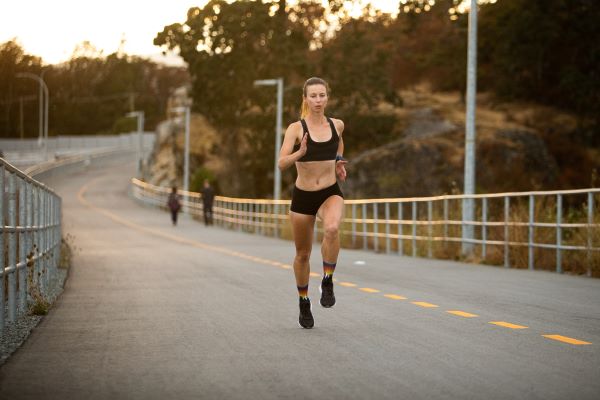I’ve been running and developing run training programs for a very long time. My passion for running began in high school after I started to see massive improvements in my race results as a 1500m and 3000m runner.
Unfortunately, after graduating from high school, I got injured and had to stop running for a while.
When I finally returned to running, I could barely run a block because that’s how out of shape I got. Needless to say, I had to start over again.
When I first tried to complete a 10k after returning to running, it took me 1:30. That’s right, an hour and thirty minutes. I had to walk a bunch because I didn’t have the aerobic capacity to run the whole thing.
It took me 3 years of consistent training to go from 90 minutes in a 10k to 40:56.

photo by Jay Wallace
Here’s what worked for me:
1. I kept training consistently and didn’t skip too many workouts/runs in a row. My training wasn’t perfect and I didn’t crush every workout but it was consistent. I was running consistently between 4-5 times per week. Some days, I ran very slow and other days I ran as hard as I could.
2. I believed that the work I was doing was going to yield positive results. By believing that running will get easier and that I will enjoy it even more, I never gave up on my goal to run under 41 minutes for a 10k (my initial goal was sub 40 but 40:56 was pretty darn close and I will revisit sub 40 min 10k goal again once my circumstances allow). You have to believe in what you are doing and trust your training.
3. I arranged my workouts in a way where the hard days were buffered by the easy days. I never did two hard days in a row. I gave myself enough time to recover from the hard days. In fact, I often gave myself at least two days before and after every hard training session. Here’s where I discuss how I build run training plans.
4. I didn’t run as hard as I possibly could every time I went running. I made sure that my easy days were very easy. A lot of people run as hard as they can every time they go running, which either leads to injuries or takes all the joy out of running. In the end, it doesn’t matter what your Strava followers think of your easy pace. In fact, it doesn’t matter what your Strava followers think at all.
5. I made my hard days and time trials really hard. However, I only did a maximum of 2 hard training days in any given week. I had to get the most out of those hard training sessions. They included workouts like: 10 by 800m, 16 by 400m, hill repeats, 5k time trials, half marathon time trials and more.
6. I sometimes did my hard training runs with people who were faster than me. When I ran with people who were faster than me, I struggled to keep up but they inspired me to try harder. During track workouts, I was focusing on closing the gap between my faster friends and I. In time trials, I would try to stay as close as possible to them and not let them get too far ahead.
7. I made sure to do 3 strength training sessions per week focusing a lot on the core and glutes. Having a strong core and glutes helps reduce the risk of injuries. I shared more injury prevention tips here.
8. I regularly stretched after my runs. Stretching provides several important benefits for runners, helping to improve performance, reduce injury risk, and support recovery. Tight muscles are more prone to strains and overuse injuries. Stretching, particularly when combined with a proper warm-up and cool-down, can help reduce muscle tightness and imbalances that contribute to injuries such as IT band syndrome, shin splints, or Achilles tendinitis.
9. I increased my weekly mileage gradually so that I didn’t end up doing too much, too soon. I never rushed to increase my mileage when I first started running again. Doing too much too soon increases the risk for injuries. My priority leading up to my 10k personal best was to stay injury-free.
10. I picked a local race where I knew the course very well. It was very PB friendly. The race I chose was the Times Colonist 10k. Ideally, if you are trying to run a personal best, you want to avoid time zone changes and the stress that comes with traveling to an event far away from your hometown.
11. I also made sure that I consistently slept well so that I was able to get the most out of my training. As time went on, I never underestimated the importance of quality sleep. Sleep plays an important role in physical and mental recovery, performance, and even longevity.
12. I managed my stress levels well (both physical and mental). I really got to know my body. I learned how to handle challenging situations without it impacting my mental health in a negative way. I knew that if I wanted to run a personal best in the 10k, I had to treat my mind and my body well. It was important for me to know when to take it easy and how to avoid burnout from training and overworking.
___________________________________________________________________________________________
Would you like me to come to your event and feature it in an upcoming post or contribute written content to your publication or brand? Let’s connect and see how we can work together.
Check out some of my favorite stores and gear recommendations.
Want to add your store to the list? Message me and I will assess if it’s a fit.